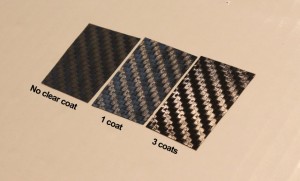I’m going to just jump right in. Hopefully you are reading these in order. So now on to the types of tools to use. You don’t want to use a sponge. The reason is that the pores on a sponge trap debris and stays there and dries. When you go to use the sponge, even if you had soaked it, it will still have some trapped debris. The best tool to use is a natural fiber body brush. This type of brush is made from imported bleached pig’s hair and is super soft to the touch. Most commonly you will find this brush with pig’s hair set in a mahogany block with epoxy cement. These types of brushes are designed for car washing clearcoat finishes, so don’t try to use it for brushing your hair. In addition, when using this type of brush you want to use very little, if any, pressure.
The brush has a nap that’s about 3″ deep. So no, you do not need to schedule a nap for it. So that you understand how much pressure to use, of the 3″ of nap, you will only use the first 1/2″ to 3/4″ of the hair. So you can see by these numbers that you are just barely applying pressure. Remember, you don’t want to create friction on your vehicle. If you are finding it difficult to locate this type of brush, then the next great thing will be ‘Ideal’ Clearcoat Washing Tool which is a synthetic wool mitt. You also need to be very careful because not all brushes that say they are pig’s hair. If the bristles or hair are too hard, then of course, you stand the chance of having them scratch the clearcoat. This would not be a good thing.
This series is just about finished. I sure hope that you have been making note of the pearls of wisdom I have shared with you. Next we will go a bit further into the soapy cleaners and which to use.





